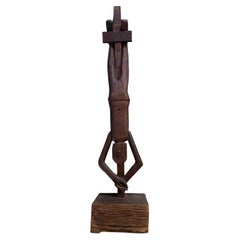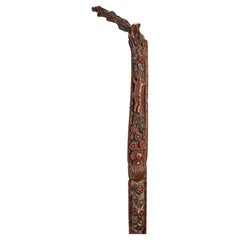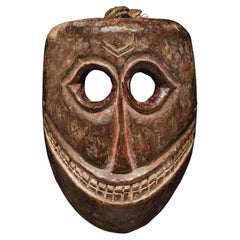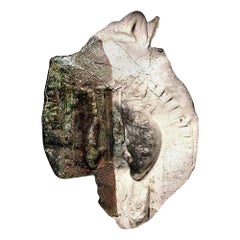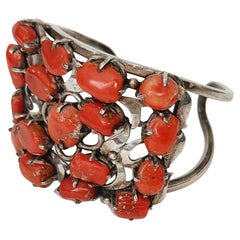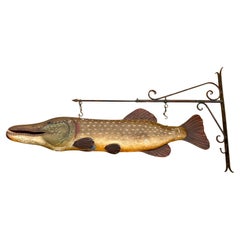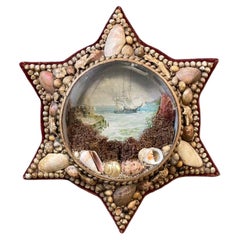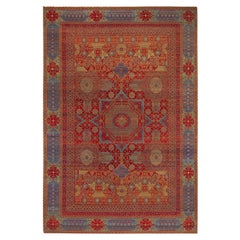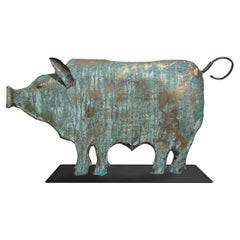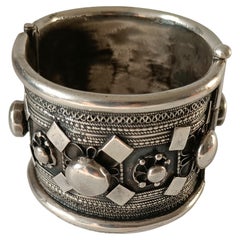Folk Art
Early 20th Century French Folk Art Folk Art
Zinc
Early 1900s Adirondack Antique Folk Art
Shell
21st Century and Contemporary Turkish Revival Folk Art
Wool, Natural Fiber, Organic Material
Mid-20th Century European Mid-Century Modern Folk Art
Brass
Late 20th Century American Folk Art Folk Art
Copper
19th Century Somali Antique Folk Art
Leather
1920s Austrian Black Forest Vintage Folk Art
Wood, Paint
1920s American Folk Art Vintage Folk Art
Wood
Early 20th Century Austrian Black Forest Folk Art
Wood, Paint
21st Century and Contemporary Turkish Revival Folk Art
Wool, Natural Fiber, Organic Material
Early 20th Century Austrian Black Forest Folk Art
Wood
Early 20th Century American Folk Art Folk Art
Wood
20th Century American Folk Art
Silver
1910s Austrian Black Forest Vintage Folk Art
Wood, Paint
19th Century American Folk Art Antique Folk Art
Maple, Walnut
1990s African Folk Art Folk Art
Wood
1990s Japanese Showa Folk Art
Silk, Wood
1920s Austrian Black Forest Vintage Folk Art
Wood, Paint
19th Century English Other Antique Folk Art
Canvas, Wood, Paint
21st Century and Contemporary Peruvian Folk Art
Stone, Multi-gemstone, Serpentine
1920s Austrian Black Forest Vintage Folk Art
Wood, Paint
19th Century American Antique Folk Art
Birch
1920s Austrian Black Forest Vintage Folk Art
Wood, Paint
1950s Congolese Tribal Vintage Folk Art
Hardwood
Late 19th Century Welsh Folk Art Antique Folk Art
Slate
20th Century American Native American Folk Art
Wool
20th Century American Folk Art
Silver
1930s American Folk Art Vintage Folk Art
Copper, Steel
21st Century and Contemporary Turkish Revival Folk Art
Wool, Organic Material, Natural Fiber
Mid-19th Century Chinese Antique Folk Art
Coral, Silver
20th Century American Folk Art
Silver
1870s English Folk Art Antique Folk Art
Textile, Wool
1920s Austrian Black Forest Vintage Folk Art
Wood, Paint
Early 20th Century New Zealand Folk Art
Hardwood
19th Century Italian Grand Tour Antique Folk Art
Clay, Terracotta
1920s Austrian Black Forest Vintage Folk Art
Wood, Paint
Early 20th Century American Adirondack Folk Art
Cotton
1870s Austrian Black Forest Antique Folk Art
Wood, Paint
1940s American Folk Art Vintage Folk Art
Marble, Copper
Early 20th Century Austrian Black Forest Folk Art
Wood, Paint
18th Century French Baroque Antique Folk Art
Iron
21st Century and Contemporary Peruvian Folk Art
Stone, Multi-gemstone
Mid-20th Century Turkish Folk Art Folk Art
Wool
20th Century French Folk Art Folk Art
Stone
21st Century and Contemporary Peruvian Folk Art
Stone, Soapstone
19th Century Fijian Antique Folk Art
Hardwood
Mid-20th Century Mexican Folk Art
Pottery
15th Century and Earlier Colombian Antique Folk Art
Clay
Early 20th Century Japanese Taisho Folk Art
Cotton
Late 19th Century British Edwardian Antique Folk Art
Brass
1920s Austrian Black Forest Vintage Folk Art
Wood, Paint
Late 19th Century Japanese Meiji Antique Folk Art
Cotton
19th Century French Folk Art Antique Folk Art
Metal
Mid-20th Century English Rustic Folk Art
Cut Steel
15th Century and Earlier Mexican Antique Folk Art
Pottery
1970s Haitian Folk Art Vintage Folk Art
Canvas, Paint
1810s Italian Neoclassical Antique Folk Art
Fir
20th Century Folk Art
Ceramic
1820s English Folk Art Antique Folk Art
Canvas, Oak
Mid-20th Century German Mid-Century Modern Folk Art
Wood
Vintage, New and Antique Folk Art
Folk art refers to a genre of art that shares the creator’s traditions, offering not just an artistic display but an opportunity to learn about a culture. Vintage, new and antique folk art typically reflects a heritage or location. It can include utilitarian objects and handmade art as diverse as weather vanes, portraiture and paintings, carnival art, quilts and duck decoys.
American folk art is frequently valued because of the traditional skills involved, like weaving, hand-carving wood and even stonework. Many folk artists are self-taught, while some train as apprentices within their community. By using available materials and taking a personal approach to their creations, artists ensure each piece is unique and conveys a story. Native American folk art includes functional objects reflecting their heritage, such as baskets, textiles and wooden pieces.
During the Great Depression, artistic materials in America were hard to come by, so artisans used discarded wood from cigar boxes and shipping crates to make highly stylized, notched pieces — most often picture frames and boxes — that are today sought after by collectors. This folk art style is called tramp art and was popular from roughly 1870 until the 1940s.
Folk art brings vibrant culture and traditions into your home. Browse an extensive collection of folk art on 1stDibs.
Read More
A Giant Wedding Cake Has Us Looking at Portuguese Tiles in a New Light
At Waddesdon Manor, artist Joana Vasconcelos has installed a three-tiered patisserie inspired by the narrative tile work of her homeland. We take a look at the cake sculpture and how Portuguese tiles have been used in architecture from the 17th century to today.
Why Jules Chéret Was the King of the Modern Poster
The streets of fin-de-siècle Paris were set aglow with colorful poster ads, thanks to the printing techniques invented by Jules Chéret. Now, the Milwaukee Art Museum is celebrating this undersung talent in America's first solo show dedicated his exuberant works.
Why the American Flag Has Had So Many Different Star Patterns
Expert Jeff Bridgman explains the history and meaning behind the twinkling constellations that have graced Old Glory.
Peggy Guggenheim Loved Modernism, but She Also Collected Tribal Art
The iconoclastic style setter displayed African and Oceanic art, as well as works by indigenous peoples of the Americas, alongside pieces by such major modernists as Pablo Picasso and Jackson Pollock.
The 13-Star American Flag Had More Variations Than You’d Think
Perfect for July 4th weekend, a new show at Philadelphia's Museum of the American Revolution displays an array of antique red, white and blue flags.
Tramp Art, America’s Most Misunderstood Art Form, Is Trending in Interiors
Designers are beginning to see this enigmatic form of folk art in a whole new light.
